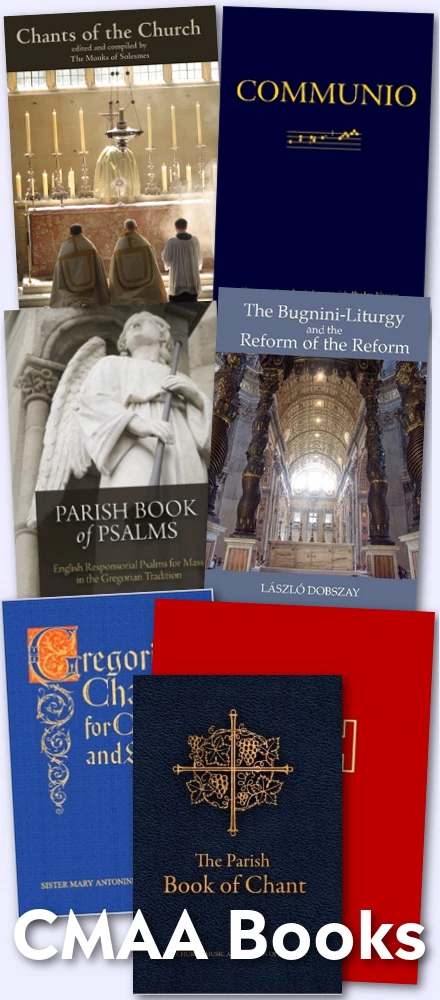In a piece written on September 26th of this year, Old Testament Righteous: Liturgical Feasts and References, Icons and Mosaics, and the Importance of Biblical Typology, we briefly considered the catechetical and theological importance of familiarity with the Old Testament -- which is inclusive of the matter of our liturgical worship and theology.
Those interested in this may not only wish to revisit that piece, but, more generally, paragraphs 128 and 129 of the Catechism of the Catholic Church:
The unity of the Old and New Testaments
128. The Church, as early as apostolic times, and then constantly in her Tradition, has illuminated the unity of the divine plan in the two Testaments through typology, which discerns in God's works of the Old Covenant prefigurations of what he accomplished in the fullness of time in the person of his incarnate Son.
129. Christians therefore read the Old Testament in the light of Christ crucified and risen. Such typological reading discloses the inexhaustible content of the Old Testament; but it must not make us forget that the Old Testament retains its own intrinsic value as Revelation reaffirmed by our Lord himself. Besides, the New Testament has to be read in the light of the Old. Early Christian catechesis made constant use of the Old Testament. As an old saying put it, the New Testament lies hidden in the Old and the Old Testament is unveiled in the New.
Additionally, in the aforementioned piece, we also discussed the particular presence (not absent within the West, even if less prominent) that the figures of the prophets and prophetesses have within the iconography and liturgical calendar of the Byzantine East. In that vein, I thought some of our readers may be interested to know that within the Byzantine calendar, these first three days of December see the remembrance of three minor prophets of the Old Testament.
December 1st was the feast of the prophet Nahum. From the Byzantine liturgical texts:
We celebrate today, the memory of your Prophet Nahum, and we implore You, O Lord, to save our souls through his intercession.
-- Troparian, Second Tone
Thy pure heart, illumined by the Holy Spirit, was a sacred vessel of resplendent prophecy, for thou didst see things far off as close at hand. Hence we revere thee, blest Nahum most glorious.
-- Kontakion, Fourth Tone

Icon of the Prophet Nahum
As well, December 2nd was the feast of the prophet Habakkuk.
Thou plainly beheldest the sacred disciples of Christ as horses that troubled the deep sea of ignorance, plunging error into the depths with their godly teachings, Habakkuk, God-proclaimer; hence, as a true Prophet, we acclaim thee, while asking that thou shouldst intercede that we find mercy with God the Lord.
-- Kontakion, Fourth Tone
Divinely eloquent Habakkuk, you announced to the world the coming forth of God from the south, from the Virgin. Standing on the divine watch, you received a report from the radiant angel: “You proclaimed the Resurrection of Christ to the world!” Therefore in gladness we cry out to you: “Rejoice, splendid adornment of the prophets!
-- Troparion, Fourth Tone

Icon of the Prophet Habakkuk
From Fr. Aidan Nichols' book, Lovely Like Jerusalem:
Habakkuk seems to be a cultic prophet living in Judah around the year 600 [B.C.]... The problematic identified by Habakkuk is the seeming divine injustice that allows a wicked nation to punish a people more righteous than itself. The answer is given in Habakkuk 2:4. Human arrogance carries within it the seeds of its own ruin, whereas the person of faith is assured of divine favor. The wonderful poem in chapter 3 has sometimes been said to have no obvious connection with the rest of the book, but it can be interpreted as a theophany in which God comes in majesty to judge the pagans and bring joy and salvation to the chosen people. The message, in other words, is not just a consolation. It is a prediction of divine intervention to come, to be identified by the Christian reader with the Parousia and its anticipation and instrument, the paschal mystery. (p. 58)
Finally, today, December 3rd, is the feast of the prophet Zephaniah.
Thou wast shown to be illumined by the Divine Spirit, O Prophet Zephaniah, proclaiming God's manifestation, and thou didst preach: Rejoice greatly, O daughters of Sion and of Jerusalem; behold, your King cometh, bringing salvation.
-- Kontakion, Fourth Tone

Icon of the Prophet Zephaniah
Other Old Testament prophets remembered in December include the Prophet Haggai on December 16th, the Prophet Daniel and the Three Holy Youths (Ananias, Azarias and Misail) on December 17th, and on the Sunday following Christmas (which this year will be Dec. 27th), King David.




















